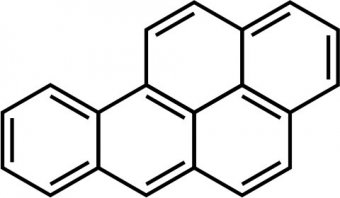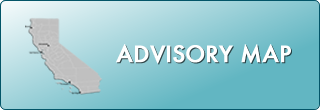Oil Spills and Seafood Fact Sheet
How is OEHHA notified about oil spills?
How does OEHHA determine whether seafood should be consumed after an oil spill?
If it is determined that fishing or shellfish harvesting takes place in the vicinity of a spill, OEHHA scientists use knowledge gained from chemical testing in seafood after previous oil spills to help determine whether harmful levels of chemicals are likely to build up in seafood after a spill. Factors that are taken into account include the:
- Type of oil and volume that spilled
- Weather and water temperature
- Season
- Location (e.g., near shore versus offshore; inland versus marine)
- Seafood species in the area
- Whether potentially impacted seafood live in the water or, in the case of some shellfish, live on the shoreline, or buried in sediments
- Whether the oil has been contained or controlled
In some cases, the oil will break down quickly and the area does not need to be closed to fishing and shellfish harvesting, or only needs to be closed for a short time (less than 48 hours).
What are the chemicals of concern in seafood after an oil spill?
Scientists have determined that polycyclic aromatic hydrocarbons (PAHs) are the chemicals in oil that are most likely to accumulate in seafood. PAHs also pose the greatest potential health risk to people who eat oiled seafood.
- Some PAHs, such as benzo[a]pyrene, may cause cancer

benzo(a)pyrene
- Other PAHs may cause “taint”–a disagreeable flavor or odor not typical of the seafood itself
- Tainted seafood may not be harmful, but it is illegal to sell across state lines
Are some seafood species more likely than others to accumulate PAHs after an oil spill?
The likelihood that seafood will retain PAHs in their edible tissues varies greatly depending on the seafood species.
- Fish are less likely to come in contact with oil
- Oil usually floats on the surface and fish can often swim away
- If exposed to oil, fish can remove PAHs from their bodies quickly
- Crustaceans (lobsters, crayfish, crabs, and shrimp) have some ability to move away from oil
- If exposed to oil, they have a moderate ability to remove PAHs from their bodies
- Bivalve mollusks (mussels, clams, and oysters) are usually immobile and cannot move away from the oil
- Bivalves have less ability to remove PAHs from their bodies
- Bivalves are more likely to retain PAHs that pose more of a human health risk
How does OEHHA determine whether seafood should be tested for PAHs after an oil spill?
Based on the evaluation of factors such as oil type, volume, weather, and local seafood species, OEHHA may determine that a short-term closure is not sufficient to protect public health. By California law, if a fishery is closed for more than 48 hours, the seafood must be tested before a fishery can be re-opened.
- Testing is done to assure the public that the seafood is safe to eat
- Following smaller spills, only bivalve mollusks may be tested because these species pose a greater risk of accumulating PAHs
- It may be determined that only bivalve mollusks are likely to pose a human health risk
- If bivalve mollusks are below a level of concern, other species will likely have much lower PAH concentrations
- Following larger spills, finfish or other shellfish may be tested
How does OEHHA test seafood for PAHs after an oil spill?
When testing is necessary, OEHHA and OSPR will cooperatively develop a “sampling and analysis plan” based on the type of oil that spilled, how much was spilled, where it spilled, and what fishing activity takes place in the area. A sampling plan will identify sampling goals, including:
- Seafood species to be collected
- Dates, times, and locations of seafood collection
- Number of samples of each species to be collected
- Analytical methods to be used to test for PAHs
After the sampling and analysis plan has been prepared, scientists from multiple state agencies participate in the collection of the seafood samples. Seafood from nearby, but unaffected, areas are also collected for comparison. Samples are then sent to a qualified laboratory for analysis of PAH levels in edible tissues of the seafood. If commercial fisheries have been affected, testing for taint may also be conducted at a separate federal laboratory.
How does OEHHA determine what level of PAHs in seafood is harmful?
Scientists use a process called “risk assessment” to determine what level of a chemical may cause health problems. This level is known as a “level of concern”. Many potentially harmful chemicals can be found in our food, drinking water, and air at levels too low to pose a health risk. Chemical levels below the “level of concern” are considered safe.
- “Levels of concern” for PAHs in seafood following an oil spill are calculated based on:
- How likely each PAH is to cause cancer
- How much seafood people consume relative to their body weight
- The age at which people are exposed
- How long PAHs are likely to be retained in the edible tissue of seafood
- OEHHA has established “levels of concern” for 13 PAHs found in oil

When all factors are combined, the risk assessment process is designed to be conservative so that risk is not underestimated.
How does OEHHA determine if it is safe to re-open an area to fishing?
Results of the laboratory analysis are sent to OEHHA, where scientists will determine whether any samples have reached or exceeded the “level of concern.” Because PAHs levels in mollusks may not reach their highest level for some weeks after a spill, testing is usually repeated until it is clear that PAH levels are stable or declining. When PAH levels are below the “level of concern” and no longer increasing, then
OEHHA will recommend that a fishery be re-opened.
Even if an area is open to fishing and shellfish harvesting, OEHHA always advises people to avoid fishing in areas where there is a visible sheen on the water and not to eat seafood that smells like oil.


